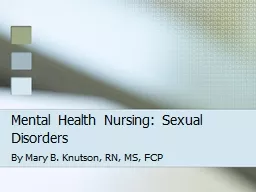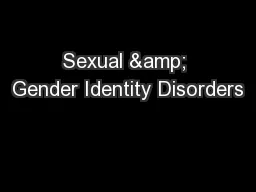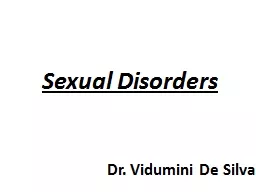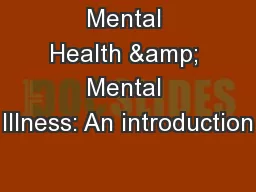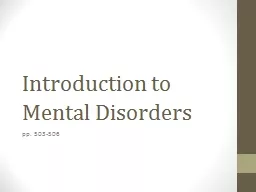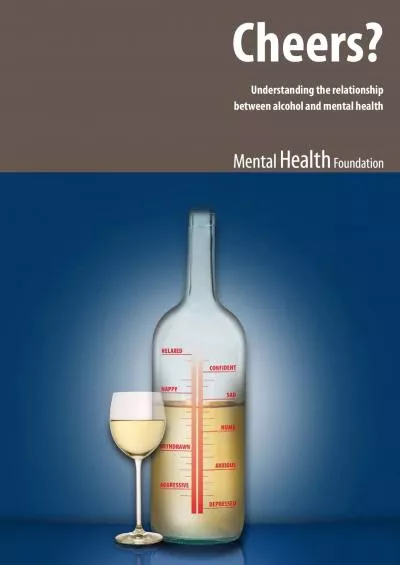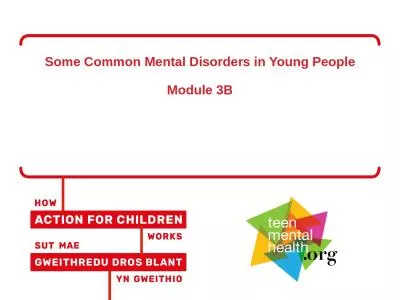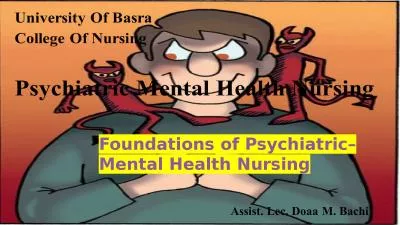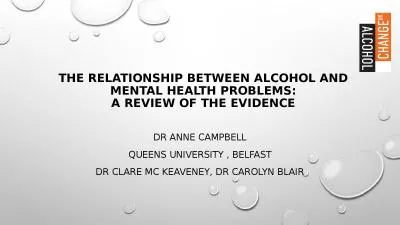PPT-Mental Health Nursing: Sexual Disorders
Author : marina-yarberry | Published Date : 2016-06-28
By Mary B Knutson RN MS FCP Definition of Sexuality A desire for contact warmth tenderness and love Adaptive sexual behavior is consensual free of force performed
Presentation Embed Code
Download Presentation
Download Presentation The PPT/PDF document "Mental Health Nursing: Sexual Disorders" is the property of its rightful owner. Permission is granted to download and print the materials on this website for personal, non-commercial use only, and to display it on your personal computer provided you do not modify the materials and that you retain all copyright notices contained in the materials. By downloading content from our website, you accept the terms of this agreement.
Mental Health Nursing: Sexual Disorders: Transcript
Download Rules Of Document
"Mental Health Nursing: Sexual Disorders"The content belongs to its owner. You may download and print it for personal use, without modification, and keep all copyright notices. By downloading, you agree to these terms.
Related Documents

